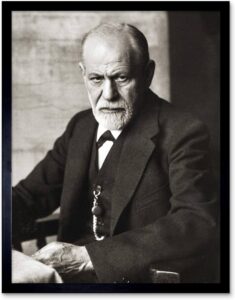Thousands of people interact daily with online dating services, hoping to find their best companion.
Yet for people over 50, online dating is very different and faster-paced than that experienced by younger people or from the pre-social media and pre-COVID-19 era years ago.
Social, mental, emotional, and physical contact drives people to find a companion, including the difficult-to-navigate and often frustrating world of online dating. In short, it’s the need to be human.
But modern society often gets in the way of resolving or mediating his basic human needs.
One respondent on a significant dating site writes, “It’s sad, but there is an epidemic of loneliness among many people in their 50s and 60s that is the driving force behind online dating. This serious issue has never been discussed but is very pervasive and potentially devastating. And despite all the energy people put into finding a long-term companion, for many, the idea of dating into your late 60s and having appositive outcomes is a sad prospect.”
Due to demographics, many people over 50 could face years without finding a loving companion. If people are lucky enough to find a suitable companion, it’s often a matter of luck rather than following a planned strategy. Some people have said that finding a very loveable companion that hits on all of their human cylinders is like winning the lottery.
Couples who win this social lottery consider themselves lucky, and each vividly remembers when and where they met. People’s need for companionship drives them online, but many come to solve their loneliness.
 Some of the obstacles in online dating for people of all ages are two sad developments: disposable relationships and how dating services trivialize dating and serious relationship-building by sending a constant stream of choices about new possible mates. Many of these obstacles are discussed in the book, “You Don’t Think I’m Beautiful.”
Some of the obstacles in online dating for people of all ages are two sad developments: disposable relationships and how dating services trivialize dating and serious relationship-building by sending a constant stream of choices about new possible mates. Many of these obstacles are discussed in the book, “You Don’t Think I’m Beautiful.”
Disposable relationships are evident in some people who have been on dating sites for years but have adopted this practice where serial monogamous relationships replace long-term ones. Disposable relationships and the idea of swiping away prospective partners who are part of a steady stream of “likes” and “dislikes” don’t help people looking for a serious long-term relationship, which makes people happy.
The Loneliness Epidemic
Psychologists, sociologists, academics, and therapists have addressed the problem of loneliness worldwide. It’s a global problem that has become more serious even before the rise of social media and COVID. In the often-cited book Bowling Alone, Robert D. Putnam (2000) proposed the concept of social capital, which deserves the same recognition as

economic, physical, and human capital. Putnam breaks down social capital into two groups:
- Bonding (exclusive) social capital networks are inward-looking and tend to reinforce exclusive identities and homogenous groups. Examples of such networks include ethnic fraternal organizations and country clubs.
- Bridging (inclusive) social capital networks is the opposite of bonding. They look outward to include people across “diverse social cleavages.” Some examples of this include the civil rights movement and youth service groups.
Putnam, an American political scientist specializing in comparative politics at Harvard, used a scientific analysis of various factors to explain this decline in social capital. He detected that the decline began in the 1970s, decades before social media and COVID-19. Putnam attributed decreased social relationships to time and money pressures, increased mobility, urban sprawl, and television viewing habits. He found that the most significant contributor (up to 50%) to social capital differences was due to generational differences.
The so-called Greatest Generation, born in the 1920s and 1930s, was significantly more socially connected than later generations, mainly due to social habits and values developed during World War II.
Television also played a role among the different generations, with TV viewing habits contributing up to 25%, the pressures of time and money about 10%, and urban sprawl (the rise of suburbia) another 10% since it factors in commuting time. Urban sprawl increased social segregation and upset the frequent interactions found in smaller communities, as opposed to suburbs.
Putnam concluded this seminal book by making seven suggestions, including using technology that encourages more face-to-face interactions, better civics lessons, politics that promote the decentralization of power, and the need for more family-like workplaces.
Loneliness As a National Issue in Britain
Psychologists and others recognize loneliness as a psychological and health risk. Britain has identified the problem as a national issue and prompted Prime Minister Theresa May to appoint a Minister for Loneliness in 2017.
The website for this position, the Campaign to End Loneliness, has defined this condition as affecting anyone, even people who seemingly have broad groups of friends and relatives.
This group defined loneliness as “a subjective, unwelcome feeling of lack or loss of companionship. It happens when there is a mismatch between the quantity and quality of our social relationships and those we want.”
According to the organization, “Experiences of loneliness can vary, but its effects can be profound and wide-ranging. It is considered by many to be one of the largest public health challenges we face.”
Based on statistics in Britain, in 2022, almost 50% of adults (25.99 million people) in the UK reported feeling lonely occasionally, sometimes, often, or permanently. About 7% suffer from chronic loneliness, meaning they feel lonely “often or always.”
Clinicians and psychologists have identified various types of loneliness broken down by severity and frequency. These types are:
- Emotional Loneliness – the absence of meaningful relationships
- Social Loneliness – a perceived deficit in the quality of social connections
- Existential Loneliness – a feeling of fundamental separateness from others and the wider world.’
- Transient Loneliness – a feeling that comes and goes
- Situational Loneliness only occurs at certain times, such as holidays or when away from work.
- Chronic Loneliness – feeling lonely all or most of the time
The feeling of being socially isolated has profound psychological and health implications. Studies have found that older people with strong social networks are more active and live longer than those with few friends or interests.
At the psychological level, loneliness can lead to a spiral of negative thoughts that can contribute to severe depression. A depressed person can turn inward, which makes it more challenging to create new social connections. This can affect careers and family relationships and destroy personal relationships. While it may sound counterintuitive, one of the best remedies is for the depressed person to generate enough inner strength and resolve so that they can go into the world and make friends.
Freud’s Theory on Loneliness
Human interactions are among the most studied topics by scientific experts. Sigmund Freud is one such expert. He did not focus on loneliness but incorporated the condition into his other psychiatric theories.

Like other sociologists and people in psychology, Freud recognized the need for social interaction and attachment, which he called the “need for relatedness.” According to Freud, this need stems from the desire for safety and security. According to Quora, it is connected to the infant’s relationship with their primary caregiver.
Freud also developed the idea of “object loss,” which refers to losing a significant person or object in one’s life. Loss causes “grief and a sense of loneliness or isolation.” As part of his developed Freud’s theory of ego and the id, he suggests that “people have unconscious desires and fears that can affect their relationships and social interactions. For example, unresolved conflicts related to attachment or separation may cause a person to push others away or avoid close relationships altogether, leading to Loneliness.”
Only the Lonely
Contributions by the Minister of Loneliness in Britain, Robert Putnam’s book, and Freud’s theories all recognize loneliness as an obstacle to improved mental and physical health.
But lonely people are often not proactive. This leaves it to lonely people to seek outside help or to help themselves. Since this article began from the point of online dating, it’s best to conclude with an observation from an online dating participant.
One person over 60 said, “Online dating for people over 50 is a fast-paced, roller-coaster of emotions, but for better or worse, this is the most popular way to meet a partner today. The best we can do is ‘know thyself’ and then learn the needed steps to screen people we want to meet face-to-face.
“If you are prepared to date, it should not be daunting. The good news is that if you do it correctly, you can find the best reward of your life. That’s why the mantra of many people online is that ‘Life is better shared with someone else’ and that ‘Life is not meant to be lived alone.'”











